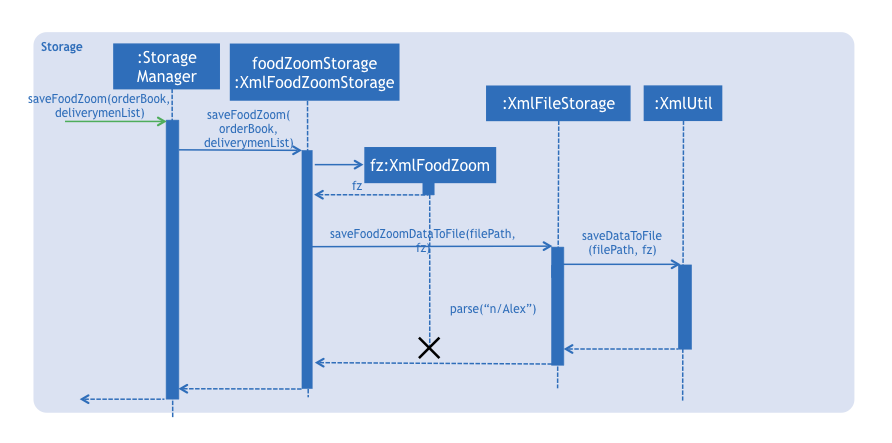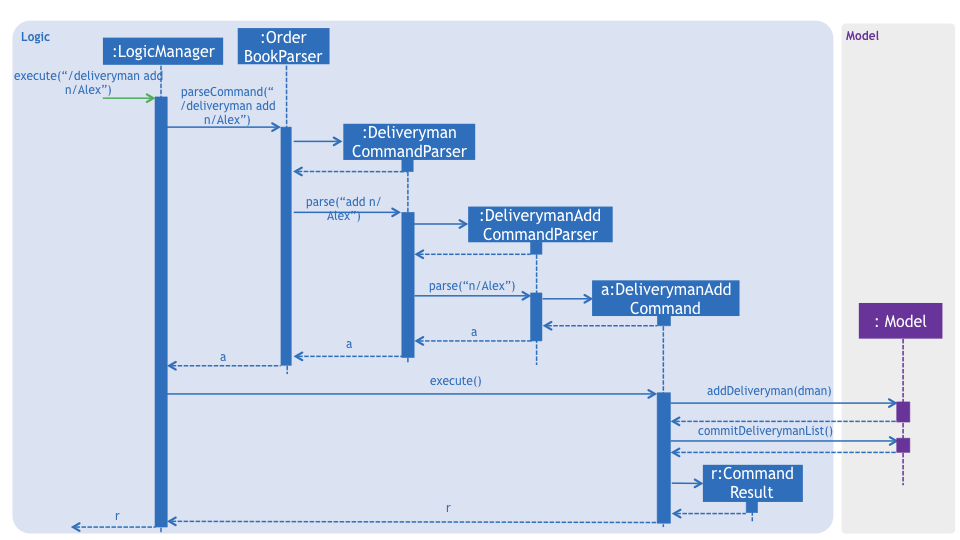PROJECT: FoodZoom
Hello there! My name is Julius Sander, and I am a Year 2 Computer Science student in National University of Singapore. This is a report of my contributions to my most recent team project, FoodZoom.
Overview
FoodZoom is a desktop food delivery management application designed for food businesses to streamline their delivery process. FoodZoom is responsive and quick, allowing managers to plan routes for order delivery and dispatch them to delivery men using the Command Line Interface (CLI). The delivery men can also use this application to view their delivery routes and increase their efficiency. FoodZoom is built by 5 computer science student namely Rahul Rajesh, Julius Sander, Monika Monuela, Koh Chi Hao and Tan Jin Ying.
FoodZoom’s core functionality includes:
-
Users being able to track food orders (visualise on a map) they have from customers
-
Managing deliverymen and assigning orders to them
-
Analysis of orders to display relevant statistics (order history, trending food etc.) to users

Summary of Contributions
Given below are contributions that I made to this application. |
-
Major enhancement: Added deliverymen into the application.
-
What it does: Managers can add, delete or assign order deliveries to the deliverymen with this feature. Managers can also see and monitor the activity of the deliverymen from the main screen.
-
Justification: This feature provides managers the ability to manage deliveryman independently from orders, giving them added control over their order deliveries.
-
Highlights: This enhancement adds new commands into the application, and requires in-depth analysis of design analysis with regards to information storage.
-
-
Minor enhancement: Added IDs to resources for storage. This provides the application an ability to save and load complex associations between resources in the application.
-
Code contribution: RepoSense
-
Other contributions:
-
Project Management:
-
Manual & automated testing of application on major features
-
-
Community:
-
Tools:
-
Integrated Github plugins (Coveralls, Travis) into the project, providing a seamless process to integrate code changes.
-
-
Contributions to User Guide
Given below are some of my contributions to the User Guide. They showcase my ability to write clear documentation targeting end-users. |
Adding a delivery man : /deliveryman add [Since v1.2]
Allows you to add a delivery man to the list of delivery men
Format: /deliveryman add n/NAME
Examples:
-
/deliveryman add n/John Smith
Listing all delivery men : /deliveryman list [Since v1.2]
Lets you see the list of all delivery men in that were added for chronological order
Format: /deliveryman list
Deleting a delivery man : /deliveryman delete [Since v1.2]
Allows you to delete the specified delivery man from the list of delivery men
Format: /deliveryman delete INDEX
Examples:
-
/deliveryman list
/deliveryman delete 2
Deletes the 2nd delivery man in the list of delivery men. -
/deliveryman find n/tom
/deliveryman delete 1
Deletes the 1st delivery man in the results of thefindcommand.
Selecting a deliveryman : /deliveryman select [Since v1.4]
Allows you to select the specified deliveryman from the list of deliverymen.
Format: /deliveryman select INDEX
Examples:
-
/deliveryman list
/deliveryman select 2
Selects the 2nd deliveryman in the list of deliverymen. -
/deliveryman find n/david
/deliveryman select 1
Selects the 1st deliveryman in the results of thefindcommand.
Contributions to the Developer Guide
Given below are sections I contributed to the Developer Guide. They showcase my ability to write technical documentation and the technical depth of my contributions to the project. |
Storage component
The following diagram shows how the Storage component is structured.

API : Storage.java
The Storage component,
-
can save
UserPrefobjects in json format and read it back. -
can save the FoodZoom data in xml format and read it back.
-
FoodZoom allows deliverymen and users to be stored separately to prevent duplication of data while retaining object associations.
-
-
can save the Users' data in xml format and read it back.
The following diagram depicts the sequence diagram of how StorageManager saves changes every time a change is made
in FoodZoom.

ModelManager.saveFoodZoom(orderBook, deliverymenList) is called.Design considerations
Aspect: Implementation of file storage structure for FoodZoom
This concerns the implementation of how application data is stored in a reloadable file.
-
Alternative 1: Use two separate files for the storage of FoodZoom data
-
Pros:
-
This solution presents a better separation of concerns between deliverymen and orders. This means that corruption of one file would not affect the other.
-
-
Cons:
-
It is more difficult to manage JXML marshalling from two separate files.
-
-
-
Alternative 2 (current choice): Use a single file to the storage of
deliverymenandorders-
Pros:
-
Coupling of
deliverymenandordersallows more cohesion, as information likeidfor a deliveryman’s orders would be unusable without knowing the orders.
-
-
Cons:
-
Corruption of one file would mean corruption of all application data.
-
-
Add deliveryman feature
Current Implementation
The add deliveryman command allows the Manager to add deliveryman into FoodZoom. It ensures that the newly-added deliveryman
is not a duplicate of an existing deliveryman.
The following diagram shows the sequence flow from the LogicManager to the ModelManager when a user enters a /deliveryman add
command:

Figure 3.5.1.1 Sequence Diagram for deliveryman add command
From Figure 3.5.1.1:
-
When
LogicManagerreceives theexecutecommand from the App, it calls theparseCommandmethod inOrderBookParser. -
OrderBookParserwill receive/deliverymanas the command and instantiateDeliverymanCommandParserto parse the rest of the command. -
If the arguments specified in the
addcommand are valid, aDeliverymanAddCommandwould be created and returned back to theLogicManager. -
LogicManagerwould proceed to callexecuteof theDeliverymanAddCommand. -
A new deliveryman would be added and a successful
CommandResultwould be returned and displayed.
FoodZoom’s deliveryman is only stored with names currently, and can be search and listed only with names.
These names are checked against validations with the Name model, and this is a compulsory
field for a deliveryman to be added. If the provided command either does not have a name, or is an invalid Name,
a ParseException would be thrown.
Design Considerations
Implementation of DeliverymanAddCommandParser
This concerns the implementation and organization of a DeliverymanAddCommand
-
Alternative 1 (current choice):
DeliverymanCommandis parsed first, then as aDeliverymanAddCommand.-
Pros: Better modularization for all commands relating to
Deliveryman -
Cons: More complicated file & package organization
-
-
Alternative 2:
DeliverymanAddCommandis parsed straight fromOrderBookParser-
Pros: Easier to manage file structure
-
Cons: Poor modularization of related
Commandclasses.
-
Implementation of DeliverymanAddCommand
This concerns how deliverymen data is stored with relation to orders.
-
Alternative 1 (current choice): Deliverymen are stored in separate file
-
Pros: Allows for greater flexibility in how deliverymen interact with other resources like order/routes - better separation of concerns.
-
Cons: Harder to implement & maintain
-
-
Alternative 2: Deliverymen are stored in the same file as
Order-
Pros: Easier to implement & maintain
-
Cons: Deliveryman can only be accessed & treated as parts of an
Order
-